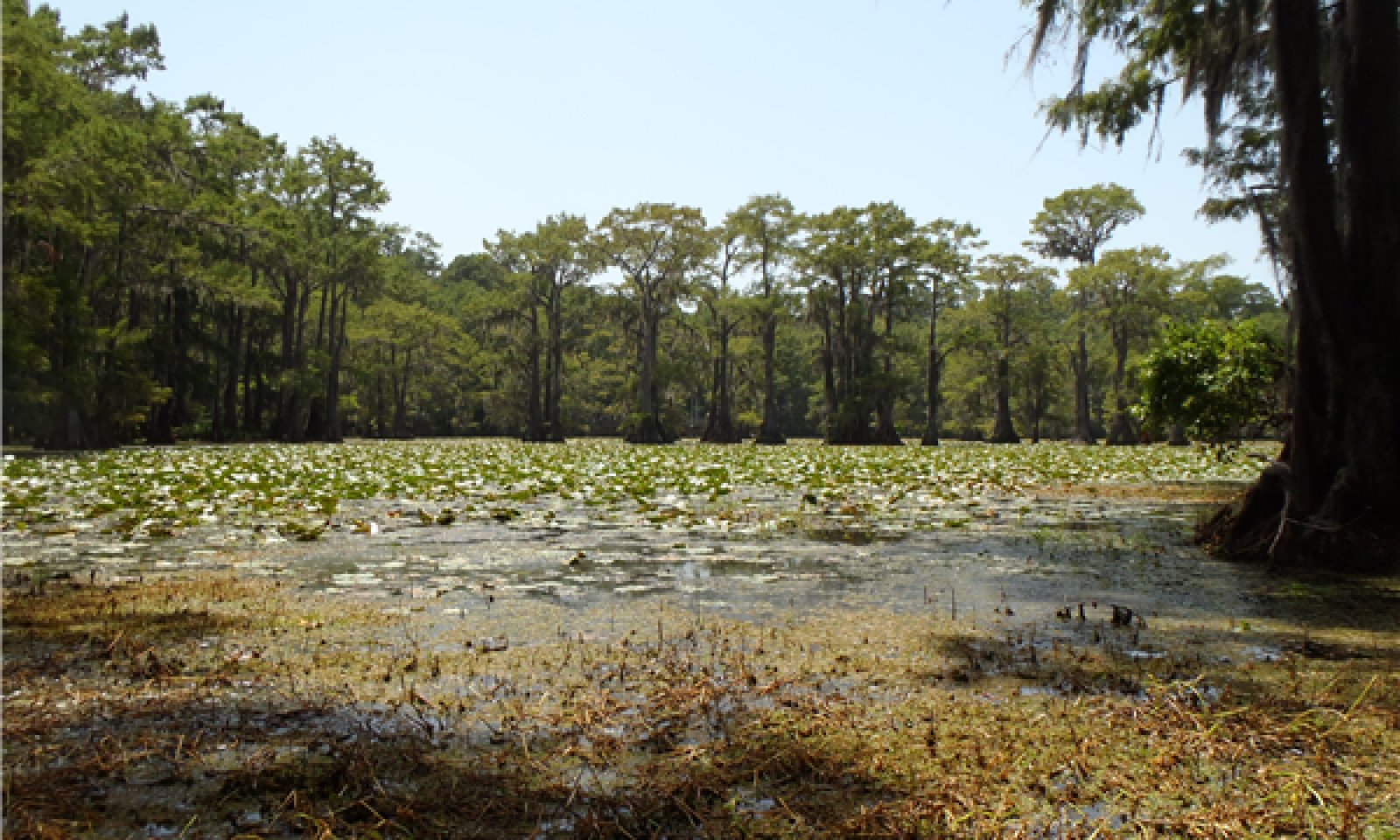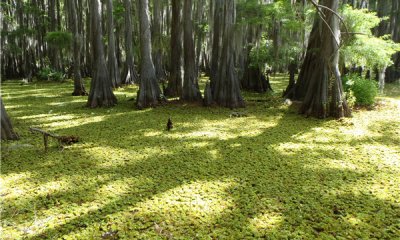
Swamp
Scenario model
Current ecosystem state
Select a state
Management practices/drivers
Select a transition or restoration pathway
-
Transition T1A
Invasion by noxious weed(s)
More details -
Restoration pathway R2A
Removal of invasives through biological, chemical, or mechanical control
More details -
No transition or restoration pathway between the selected states has been described
Target ecosystem state
Select a state
Description
Three community phases exist in the Bald Cypress Forest (1): Submerged Community (1.1), Dry Community (1.2), and No Overstory Community (1.3). The state has a high overstory canopy cover (75 to 95 percent) of bald cypress with planertree (Planera aquatica) and water tupelo (Nyssa aquatica) occurring occasionally. Basal areas usually range from 90 to 110 square feet per acre, but can be difficult to judge because of the buttressing at the base of the bald cypress. Flooding and prolonged inundation in State 1 is common occurring most of the year. Unless extreme drought occurs, the soils may only be dry from July to September.
Submodel
Description
Giant salvinia is small free-floating plant native to South America. It is rapidly growing and able to double in size every four to ten days under good conditions. Colonies that cover the surface cut off light to native plants and can cause oxygen depletions. The depletions are detrimental to an already low-oxygen environment. Further, decomposition of dead salvinia in the water column can further deplete oxygen levels, causing fish kills. Salvinias have no known direct food value to native wildlife.
Submodel
Mechanism
The transition from the Bald Cypress Forest (State 1) to the Invasion State (2) is a result of occupancy by noxious weeds. Most commonly, giant salvinia chokes out all other native species. Other invasive species could include alligatorweed, waterhyacinth, hydrilla, and/or Chinese tallow.
Mechanism
The driver for restoration is removal of the noxious invasives. Control of the many aquatic invasives is difficult requiring great effort. Mechanical options include seining or raking but the plants will reestablish from any remaining fragments.
Biological controls include using triploid grass carp. Permits are required before usage and may be purchased through certified dealers. Salvinia weevils (Cyrtobagous salvinae) have also been used for control. They are natural predators and feed only on salvinia. Biological controls will not completely eradicate invasives, but have proven beneficial in some circumstances.
Several chemicals methods are available including diquat, fluridone, glyphosate, penoxsalum, and flumioxazin. Some aquatic herbicides have water use restrictions and can potentially affect non-target species, so labels and restrictions should be studied prior to application. Careful understanding of consequences is necessary before application of any control method.
Model keys
Briefcase
Add ecological sites and Major Land Resource Areas to your briefcase by clicking on the briefcase (![]() ) icon wherever it occurs. Drag and drop items to reorder. Cookies are used to store briefcase items between browsing sessions. Because of this, the number of items that can be added to your briefcase is limited, and briefcase items added on one device and browser cannot be accessed from another device or browser. Users who do not wish to place cookies on their devices should not use the briefcase tool. Briefcase cookies serve no other purpose than described here and are deleted whenever browsing history is cleared.
) icon wherever it occurs. Drag and drop items to reorder. Cookies are used to store briefcase items between browsing sessions. Because of this, the number of items that can be added to your briefcase is limited, and briefcase items added on one device and browser cannot be accessed from another device or browser. Users who do not wish to place cookies on their devices should not use the briefcase tool. Briefcase cookies serve no other purpose than described here and are deleted whenever browsing history is cleared.
Ecological sites
Major Land Resource Areas
The Ecosystem Dynamics Interpretive Tool is an information system framework developed by the USDA-ARS Jornada Experimental Range, USDA Natural Resources Conservation Service, and New Mexico State University.









